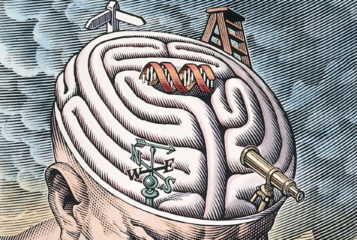|
The End of Sex and the Future of Human Reproduction Published by Harvard University Press ISBN-10: 0674728963, ISBN-13: 978-0674728967 Buy this book from Amazon UK |
This book makes a startling prediction – within the next 20 to 40 years, most people with access to good healthcare will no longer have sex to conceive their children. Instead, parents will simply provide a few body cells, such as skin cells, as the raw material for production of embryos. These embryos will be extensively screened, using an enhanced version of the technique known as preimplantation genetic diagnosis (PGD). This will allow parents to select embryos for transfer to the mother's womb that are free of recognised serious inherited disorders. And it opens up other possibilities: they may be able to choose those with a better than random chance of having a long and healthy life, a high IQ, or superior musical or athletic ability.
Henry Greely calls the overall process, encompassing both the production and screening of embryos, 'Easy PGD'. He argues that much of the development of Easy PGD will piggyback on scientific and technological advances driven by other end uses. And he believes that the resulting benefit of a lower burden of inherited disease could lead to health insurers and public health providers making Easy PGD available for free.
The most likely method for producing embryos will be to first turn body cells into general-purpose induced pluripotent stem (iPS) cells. Gametes – eggs and sperm – will then be derived from these iPS cells. Other possibilities are to produce gametes from stem cells in human embryos, or from cells created with nuclear transfer technology (the method used to create Dolly the cloned sheep). Embryos would be created from gametes by in vitro fertilisation.
As well as providing an alternative way to reproduce for two people of opposite sexes, these new technologies could facilitate other developments: the generation of 'cross-sex' gametes, allowing same-sex couples to become biological parents together; 'uniparenting' – better known to biologists as 'selfing' – in which both gametes used to create a baby are derived from the same individual; and, conversely, creating a baby using the genetic material of more than two people. It may also be feasible to edit the genome to allow selected genes to be added.
The prospect of creating babies from in-vitro derived gametes has been on the radar for many years. Greely describes recent research that brings it closer. But this book's most distinctive contribution is its exploration of how the capacity to produce a large number of embryos will enable unprecedented levels of genetic testing and selection. The focus is on the USA, where – unlike in the UK – regulation of reproductive medicine is relatively loose. Greely gives a comprehensive assessment of political and regulatory issues, including safety considerations. This is peppered with historical insights – his analysis of the possible social impacts of these developments is thorough, and he raises important ethical questions.
This book is ambitious in its scope, including as it does a summary of the background science. However, readers may find the description of the machinery of cells, chromosomes and genomes heavy going. And explanations of evolutionary biology are not the author's strong point. On the other hand, the history of the science of stem cells is nicely told. And there are good explanations of applied scientific and medical topics, such as the treatment of infertility and the genetics of inherited diseases. I have a quibble with the statement that 'about 1 in 3 couples where the woman is over 35 are infertile' – this is meaningless without giving an upper age for the population of couples to which this statistic refers. And a claim that amniocentesis carried out by an experienced practitioner produces a miscarriage rate as low as 0.1 percent is contentious.
What of Greely's startling prediction? There are good prospects for substantial progress in genetic testing. But it is likely to be some years before clinics can offer people the chance to have babies created from body cells, even if there are no unexpected technical problems. To be sure beyond reasonable doubt that these babies will not have long-term health problems will then require decades of observation. In the meantime, there will be some degree of risk, albeit declining risk if results appear to be reassuring. And many people will resist accepting medical assistance for something they can happily achieve without. Given all this, I think it is unlikely to become the norm within the next 40 years for fertile mixed-sex couples to choose to have babies using these new methods. Most will continue to reproduce the old-fashioned way.
But, as Greely notes, many people are driven to have their own genetic children. It is difficult to disagree with his assessment that, if these new techniques should eventually become available – and this is by no means certain – they will, in the first instance, be most appealing to people who cannot otherwise produce viable eggs or sperm. Enabling such people to become biological parents would be a major development.
Buy The End of Sex and the Future of Human Reproduction from Amazon UK.






Leave a Reply
You must be logged in to post a comment.